Mönchengladbach - Some more history / Ein bißchen mehr Geschichte
(Edited)
| Long, long ago, I started to introduce my hometown & wanted to write a follow-up. But because of my new job & the high temperatures here in Kerala, I never got around to it. The job finished a while ago (& a new one is waiting), so now is probably the time to go for it, even though the temperatures are still the same. Therefore, today I'll show you some of the more noteworthy - ie. historical - parts of Mönchengladbach. | Lang, lang ist es her, daß ich meine Heimatstadt vorstellte & eine Fortsetzung schreiben wollte. Wegen meines neuen Jobs & der Hitze hier in Kerala, kam ich aber nie dazu. Der Job ist Vergangenheit (& ein neuer in Aussicht), also ist jetzt wohl der richtige Zeitpunkt dafür, auch wenn die Temperaturen gleich bleiben. Daher zeige ich heute einige der bemerkenswerteren - sprich historischen - Teile Mönchengladbachs. |
|---|

If you're reading this on hive.blog, you probably have to scroll sideways to read the text. For a better experience, you should read it on ecency.com or other frontends.
/
Wer dies auf hive.blog liest, muß wahrscheinlich seitwärts scrollen, um den (deutschen) Text zu lesen. Auf ecency.com (oder anderen Frontends) gibt es dieses Problem nicht.
| Let's start with a rather unremarkable building near the Basilica of St. Vitus described in the linked article: | Fangen wir an mit einem eher unauffälligen Gebäude nahe des Münsters aus dem oben verlinkten Artikel: |
|---|

| This is a clergy house. Originally built in the 13th or 14th century, it was used as a hospital for the adjacent monastery from 1340 onward. It was partially destroyed in World War II, but reconstructed faithfully (or so they say). | Das ist eine Propstei. Ursprünglich im 13. oder 14. Jahrhundert erbaut, war sie ab 1340 das Krankenhaus der nahen Abtei. Teils im 2. Weltkrieg zerstört, wurde sie (angeblich) originalgetreu wiederaufgebaut. |
|---|
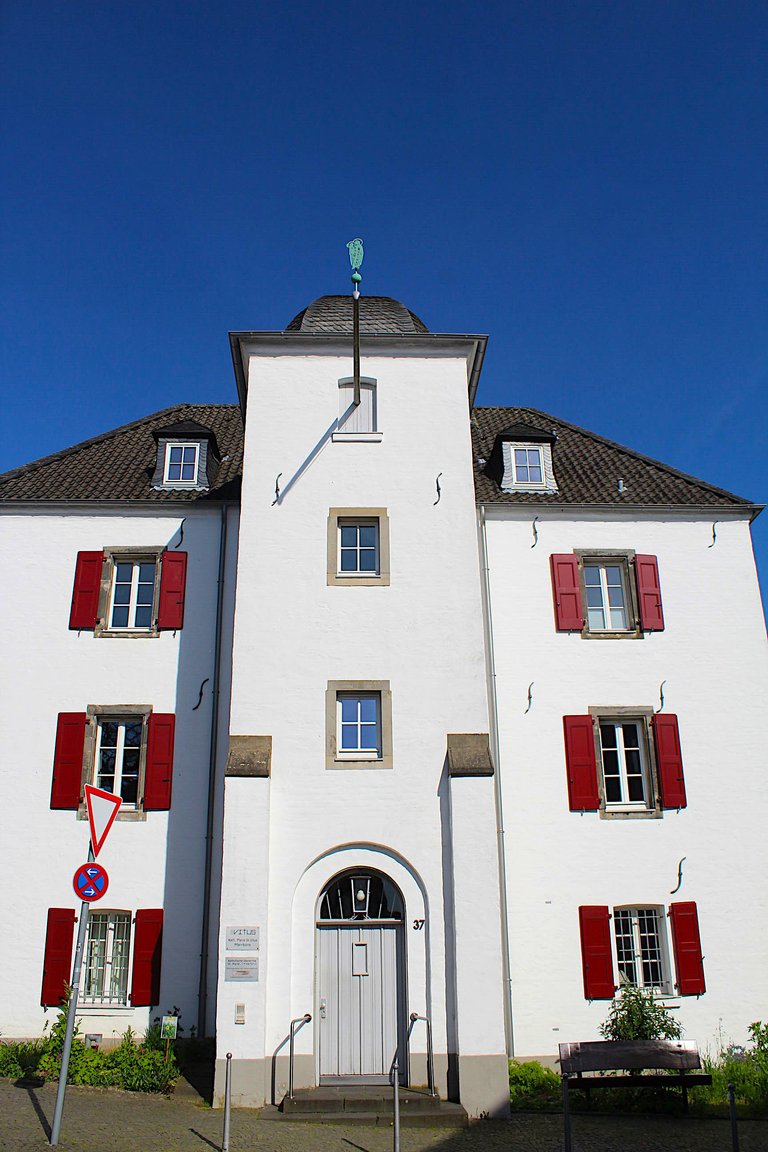 |  |
|---|
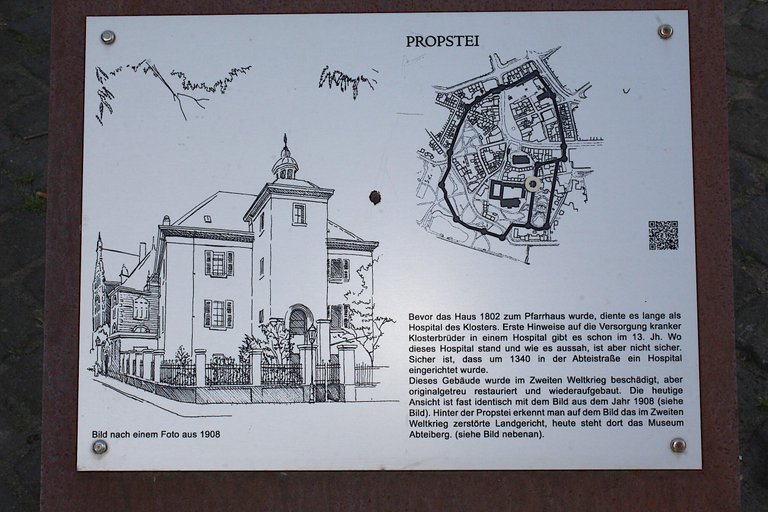
| The plaque at the building shows its position in the old town limits & a picture from 1908. As you can see, there are quite some differences. Must have been a faithful reconstruction with Chinese characteristics. | Die Tafel am Gebäude zeigt seine Position in der alten Stadt & ein Bild aus dem Jahr 1908. Wie man sieht, gibt es einige Unterschiede. War wohl eine originalgetreue Rekonstruktion der chinesischen Art. |
|---|

| The building you see above in the middle is a bit more interesting. This is the old arsenal, which is supposed to be the narrowest building in the city. Which probably goes to show that MG was usually not in need of a lot of weapons. Haven't found much about the actual history of the building, but the most interesting part is what's inside: a carneval museum. MG is a major centre of Rhenish carneval, so a small museum makes sense. If you want to visit, the address is Weiherstr. 2-4. | Das Gebäude, das man oben sieht, ist das alte Zeughaus, das auch das schmalste Gebäude der Stadt sein soll. Was vermutlich zeigt, daß MG keinen großen Bedarf für Waffen hatte. Fand nicht viel über die Geschichte des Hauses, aber das Innere ist sowieso am interessantesten: ein Karnevalsmuseum. Mönchengladbach ist ein Zentrum des rheinischen Karnevals, also braucht man wohl ein Museum. Für den Karnevalsinteressierten: die Adresse lautet Weiherstr. 2-4. |
|---|
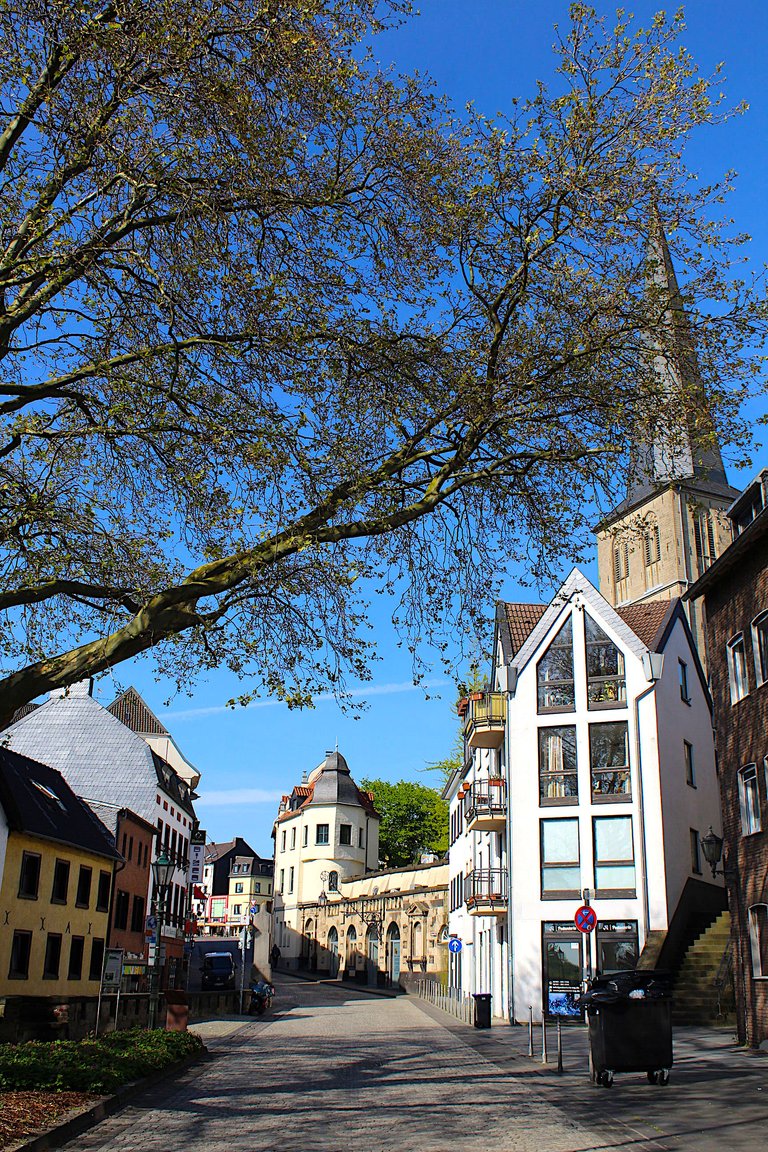
| A view uphill from the old arsenal. The building in the centre is another small old jewel. | Ein Blick bergauf vom alten Zeughaus. Das Haus in der Mitte ist ein weiteres kleines Juwel. |
|---|

| That is the guest house St. Vith, originally built to house guests of the monastery in the 16th century, probably in 1586. Legend has it, that it was only built because the abbot at the time didn't want to see the public whipping post built by the secular lord. Nowadays it serves as a brewpub. | Es handelt sich um das Gasthaus St. Vith, das ursprünglich für die Abteigäste gedacht war, gebaut im 16. Jh., vermutlich 1586. Nach einer Legende wurde es nur gebaut, weil der damalige Abt den öffentlichen Pranger nicht sehen wollte, der von einem weltlichen Fürsten gebaut worden war. |
|---|
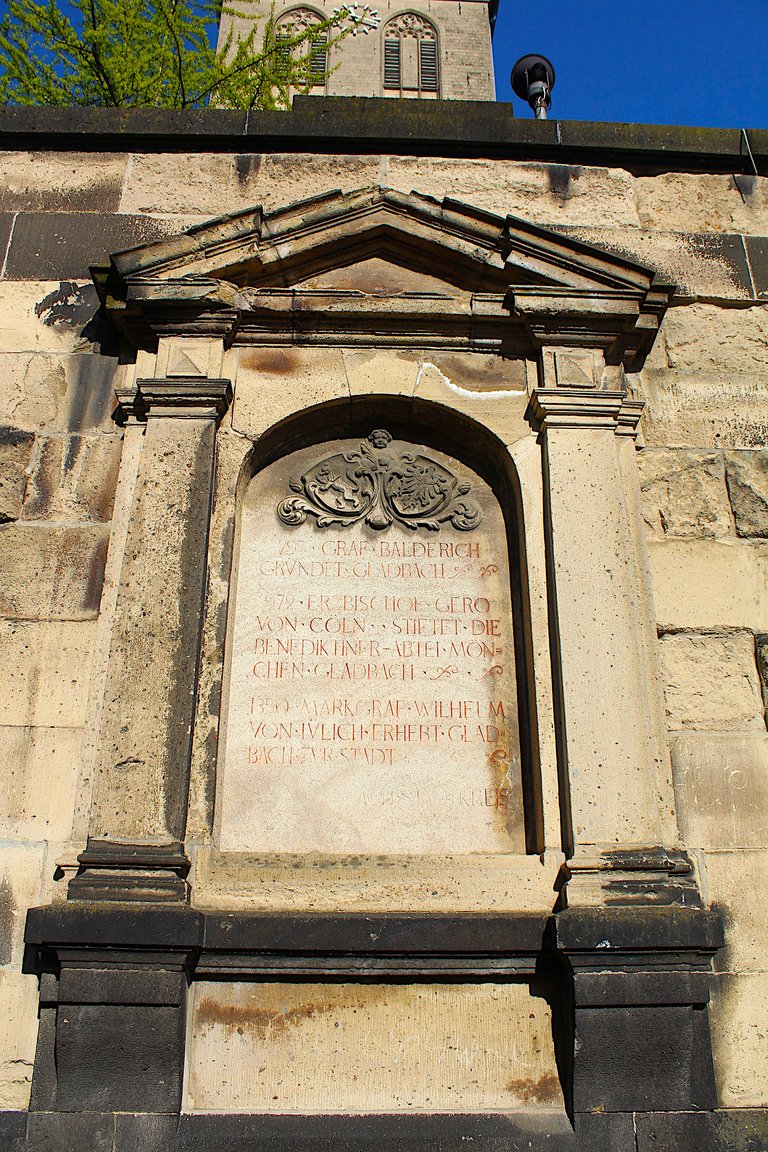 | 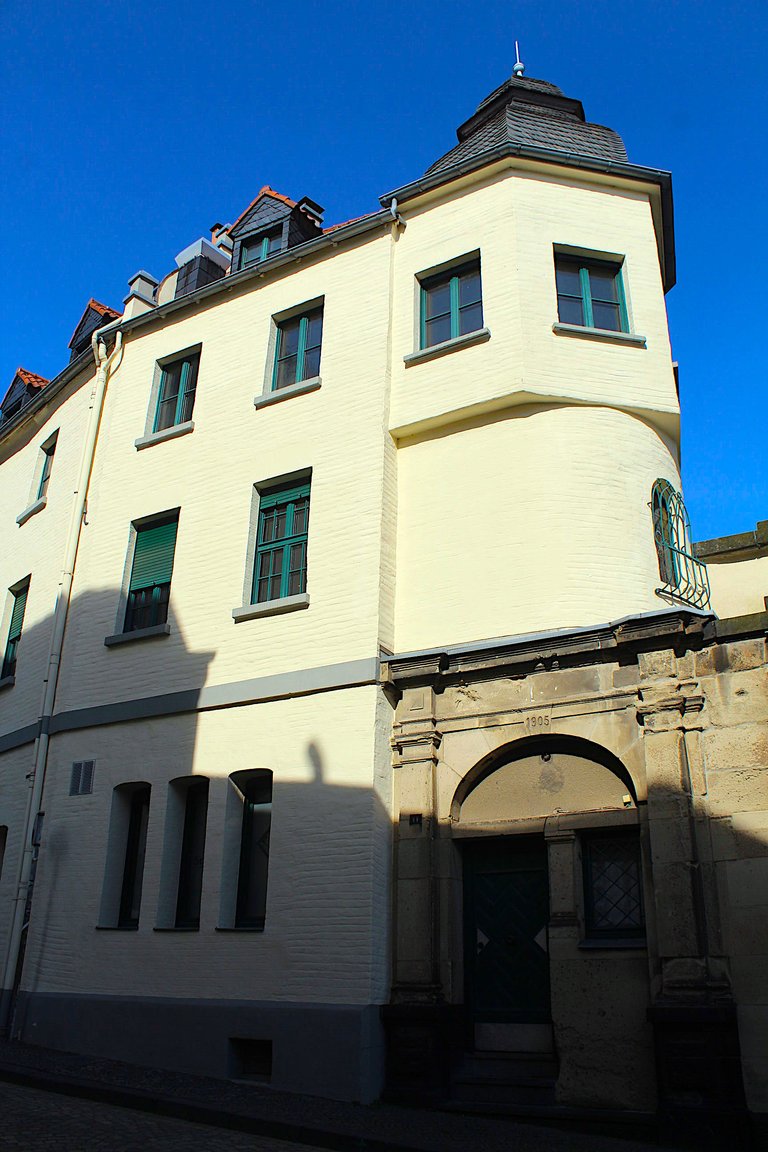 |
|---|
| The engraving in the wall below the guest house describes some important moments in the city's history: foundation in 795 AD by duke Balderich, 972 AD the beginning of the monastery & granting of town privileges in 1350. | Die Gravur in der darunterliegenden Mauer beschreibt einige bedeutende Momente der Stadtgeschichte: Gründung durch Graf Balderich 795 AD, Anfänge der Abtei 972 & Gewährung der Stadtrechte 1350. |
|---|
 |  |
|---|
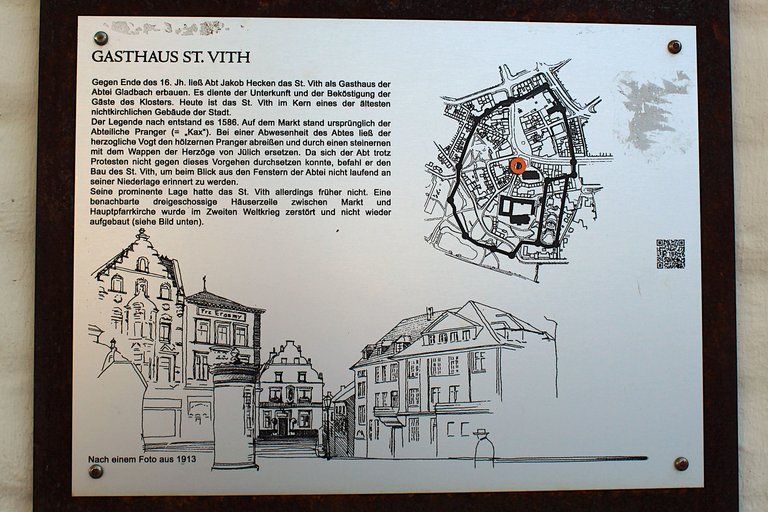
| Nice old building. Probably quite pleasant in summer to sit under the trees & have lunch there. I wouldn't know, because I can't (& don't want to) afford it. If you can (& want to), St. Vith is right near the Alter Markt. What you can see behind the guest house is the former parish church. | Nettes altes Gebäude. Wahrscheinlich sehr angenehm, dort im Sommer unter den Bäumen zu Mittag zu essen. Nicht daß ich das wüßte, da ich mir das nicht leisten kann (& will). Wer es kann (& will), findet St. Vith direkt am Alten Markt. Was man da hinter dem Gasthaus sehen kann, ist die ehemalige Pfarrkirche. |
|---|

| Originally it was the Church of the Assumption. Nowadays they call it the city church, because in 2006, the diocese was in a financial crisis & couldn't keep all its churches. So, they kept the Basilica of St. Vitus as the parish church, while the Assumption Church was essentially taken over by some kind of foundation. There are still church services, but it stays open for everybody during the week & exhibits non-Christian art works. | Das war einmal die Kirche St. Mariae Himmelfahrt. Heute nennt man sie Citykirche, weil das Bistum 2006 eine Finanzkrise hatte & nicht alle Kirchen behalten konnte. Also behielt man das Münster als Pfarrkirche, während Mariae Himmelfahrt quasi von einem Bauverein übernommen wurde. Es gibt immer noch Gottesdienste, aber die Kirche ist offen für alle & es gibt ständig Kunstausstellungen. |
|---|
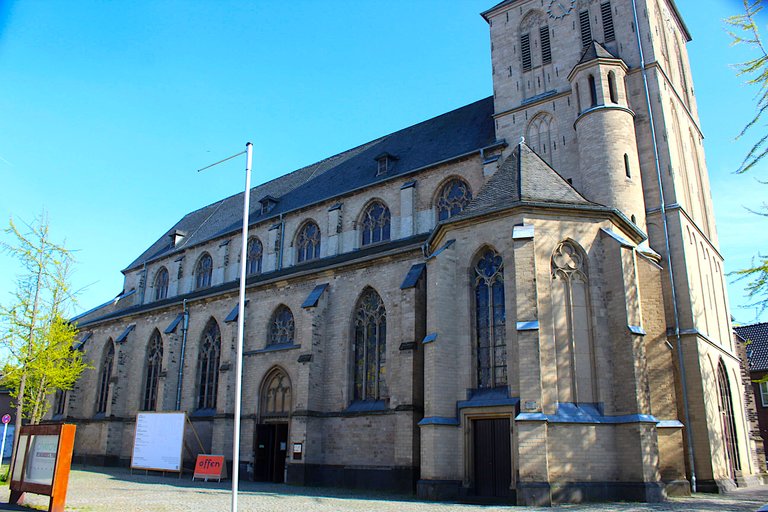
| The origins of the church lie at the end of the 12th century. But the current building was built from 1469 to 1533 in late Gothic style. | Die Ursprünge der Kirche liegen am Ende des 12. Jahrhunderts. Das heutige Gebäude wurde aber von 1469 bis 1533 im spätgotischen Stil erbaut. |
|---|
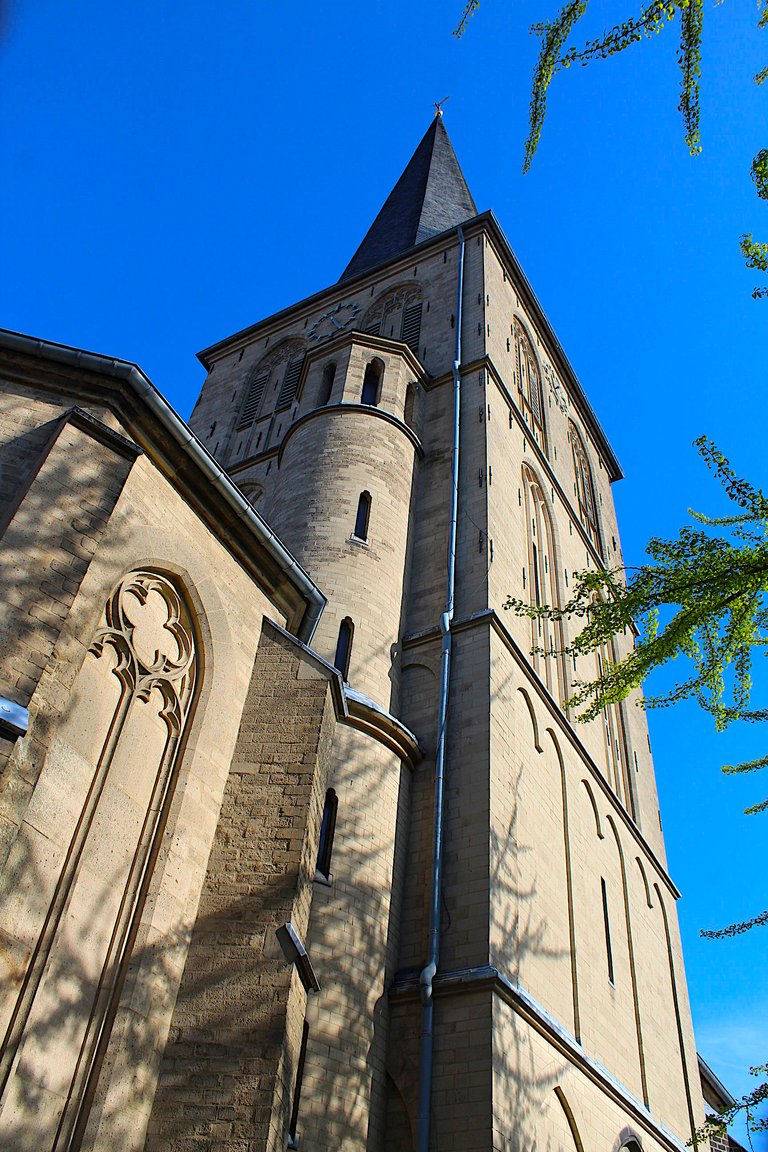 |  |
|---|
| Like much of the city centre, the church was severely damaged in World War II, essentially only the outer walls were left standing. It took 20 years to rebuild it. | Wie vieles im Stadtzentrum wurde die Kirche im 2. WK stark beschädigt, nur die Außenwände standen noch. Man brauchte 20 Jahre für den Wiederaufbau. |
|---|

| I's almost as big as the Basilica of St. Vitus & the distance is less than 100 m. While the basilica served the abbey, the parish church was - well - for the parish. But it's quite typical for the area where I come from to have so many churches. Also quite typical for my hometown is the (late) Gothic style of the church. | Die Kirche ist fast so groß wie das Münster & weniger als 100m entfernt. Das Münster diente der Abtei, während die Pfarrkirche für das Bürgertum da war. Es recht typisch für die Gegend, aus der ich komme, soviele Kirchen zu haben. Auch typisch ist der (spät-)gotische Stil. |
|---|
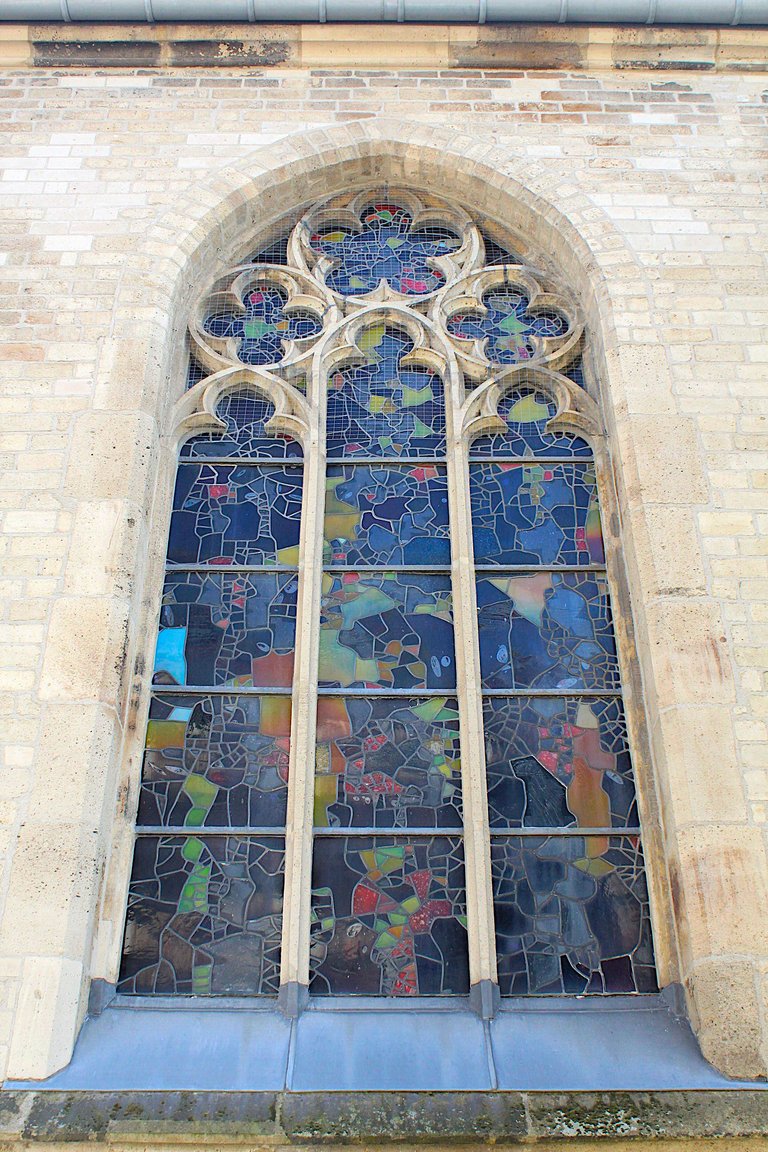

| I'm not a believer & don't care much for all the religious stuff, but I like this kind of robust architecture & I've always been fond of these typical church windows. | Ich bin ungläubig & religiöser Kram kümmert mich nicht, aber ich mag diese bullige Architektur & hatte immer was für die typischen Kirchenfenster übrig. |
|---|


| If from the church you walk along the Alter Markt & then turn left into the Waldhausener Street (where all the pubs are), then you will find another part of city history: parts of the old city wall with the Fat Tower (called so because it looks quite stubby). As you can see from the garbage in the crenel above, the drunkards you usually find in the old town don't care much. | Wenn man von der Kirche aus am Alten Markt entlanggeht & dann nach links in die Waldhausener Str. (mit all den Kneipen) geht, findet man ein weiteres Stück Stadtgeschichte: Teile der alten Stadtmauer mir dem Dicken Turm (sieht halt etwas fett aus). Wie man am Müll in der Schießscharte erkennt, kümmern sich die Säufer, die man oft in der Altstadt findet, nicht um Geschichte. |
|---|

| Not much is left of the old city wall. At places you can see that parts are missing, here some gates perhaps. | Von der Stadtmauer ist nicht viel übrig. Mancherorts sieht man, daß Teile fehlen, hier vielleicht ein paar Tore. |
|---|
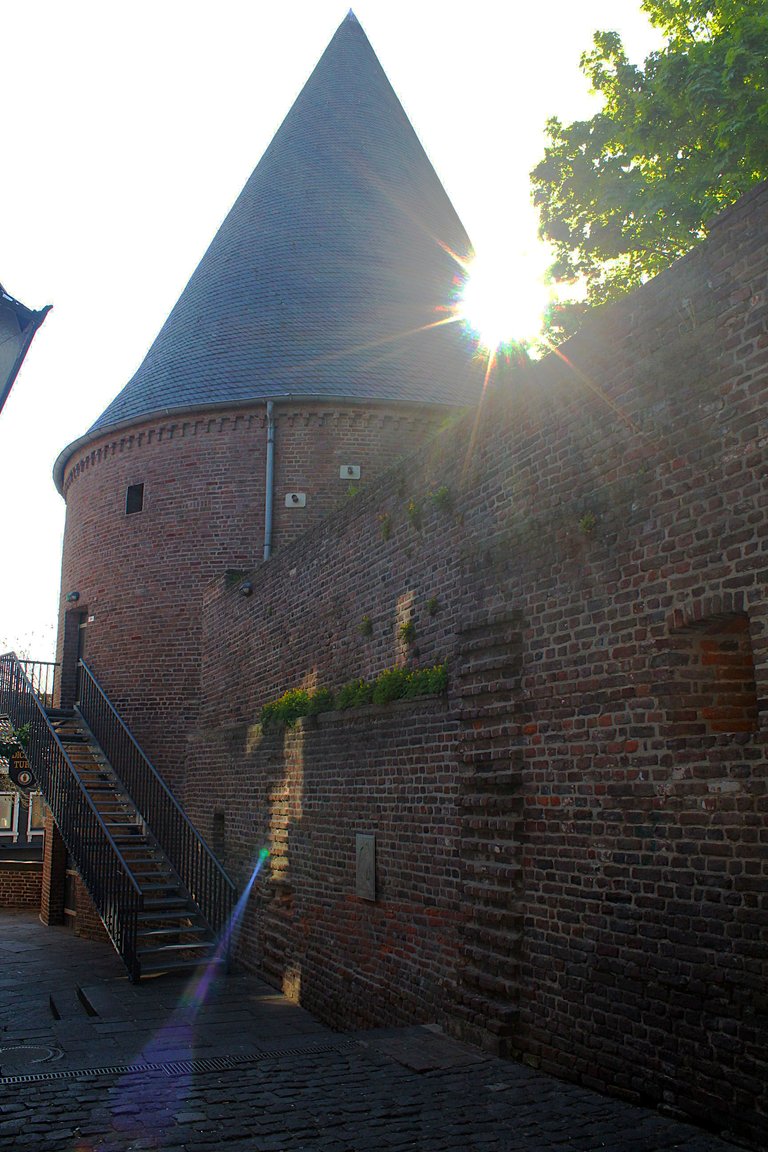
| Tower & wall are from the late Middle Ages, probably late 15th or early 16th century. This part of the wall was preserved up to a height of 7m before restoration. The tower was reconstructed in 1974. It has a diameter of 12.5m & walls of more than 3m thickness. | Turm & Mauer stammen aus dem Spätmittelalter, vermutlich spätes 15. oder frühes 16. Jahrhundert. Dieser Teil der Mauer war vor der Restaurierung bis zu einer Höhe von 7m erhalten. Der Turm wurde 1974 rekonstruiert. Er hat einen Durchmesser von 12,5m & Wände mit mehr als 3m Dicke. |
|---|
 |  |
|---|
| I would call it 'little fatty'. | Ich würde ihn Dickerchen nennen. |
|---|
 | 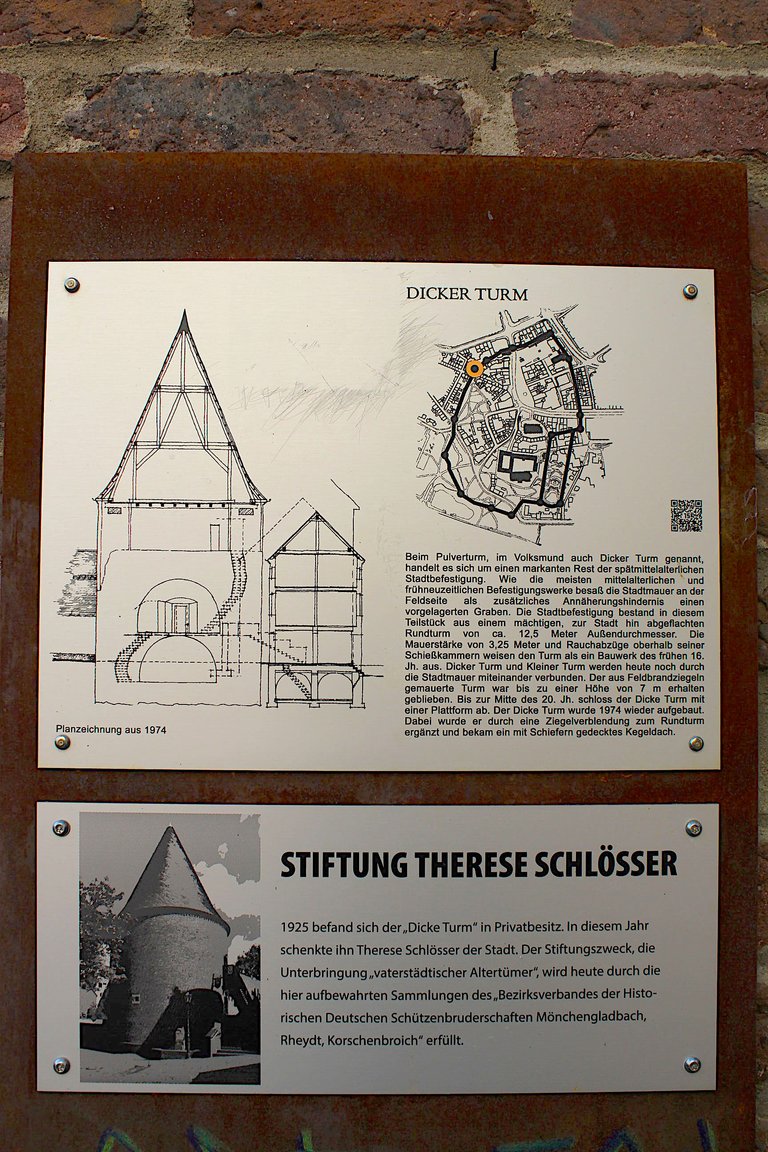 |
|---|
| The left pic above shows the extent of the old city fortifications, highlighted are the parts that still exist. On the right you can see the plans of the reconstruction. | Das linke Bild oben zeigt die Ausdehnung der alten Stadtbefestigung mit den Teilen, die es noch gibt. Rechts sieht man Pläne der Rekonstruktion. |
|---|
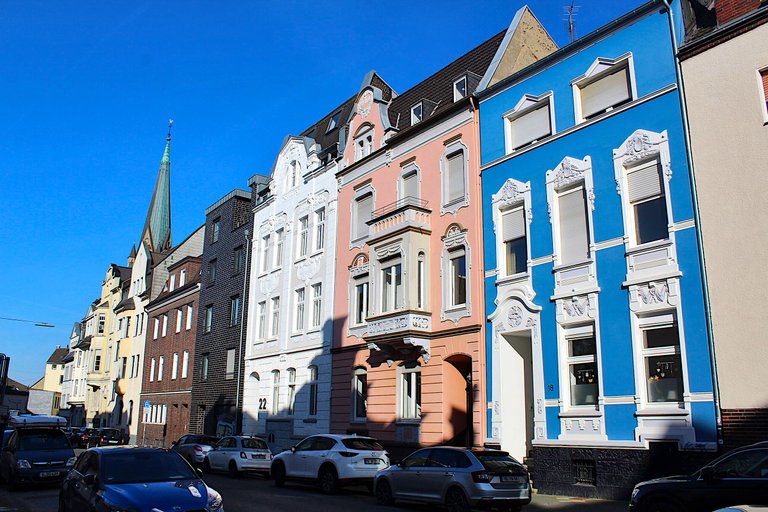

| The photos above show fairly typical street scenes in Mönchengladbach. Would be even more typical had the city not been largely destroyed in World War II. It's what we call Gründerzeit quarter. Better would perhaps be the label historicism, but language is not exact. Most of these buildings originate from around the start of the 20th century. A time when MG was growing rapidly because of its textile industry. | Die Fotos oben zeigen recht typische Gladbacher Straßenszenen. Wären noch typischer, wenn nicht während des 2. Weltkrieges große Teile der Stadt zerstört worden wären. Wir nennen das die Gründerzeitviertel (auch wenn Historismus vielleicht genauer wäre). Die Gebäude stammen meist vom Ende des 19., Anfang des 20. Jahrhunderts, als Mönchengladbach wegen der Textilindustrie stark wuchs. |
|---|
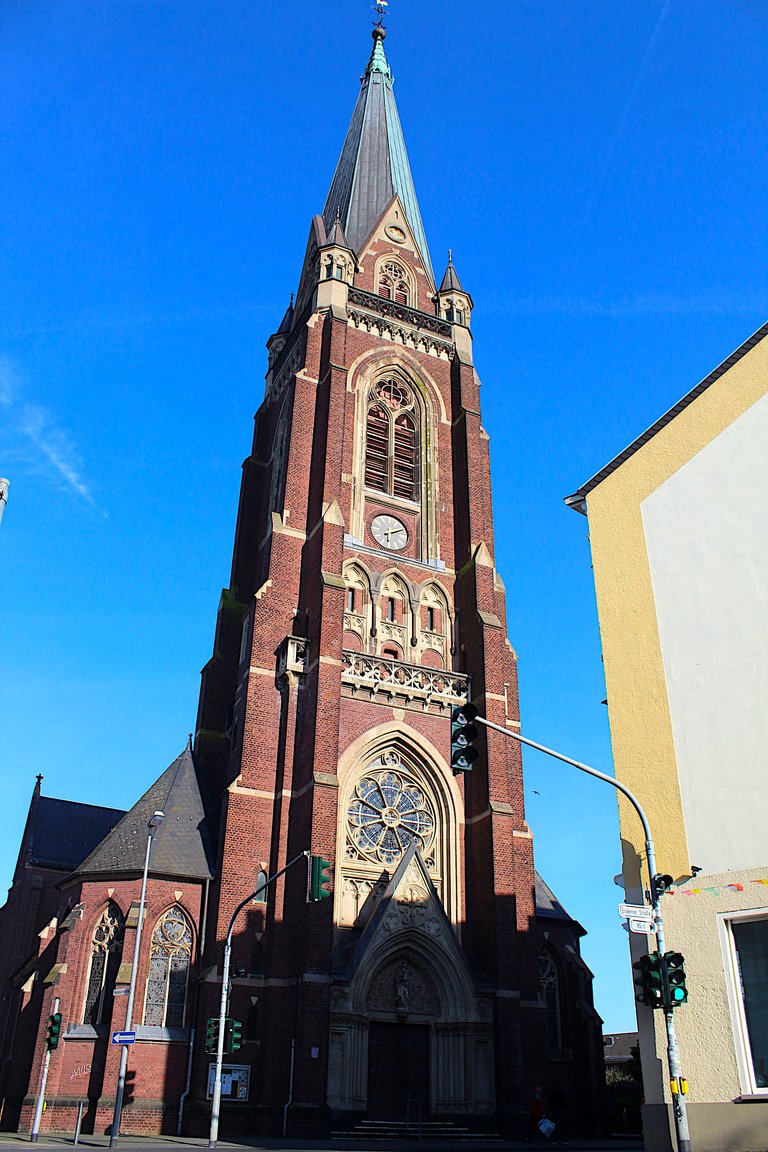
| Part of the quarter is the above church, Sankt Maria Rosenkranz (don't know how to translate the name, Rosenkranz is rosary). This is a quite typical example of the neo Gothic style of the Gründerzeit. | Teil des Viertels ist die obige Kirche, Sankt Maria Rosenkranz. Diese ist ein typisches Beispiel für den neogotischen Stil für die katholischen Kirchen der Gründerzeit. |
|---|

| The main gate. I particularly like the fittings. | Der Haupteingang. Man schaue sich die Beschläge an. |
|---|
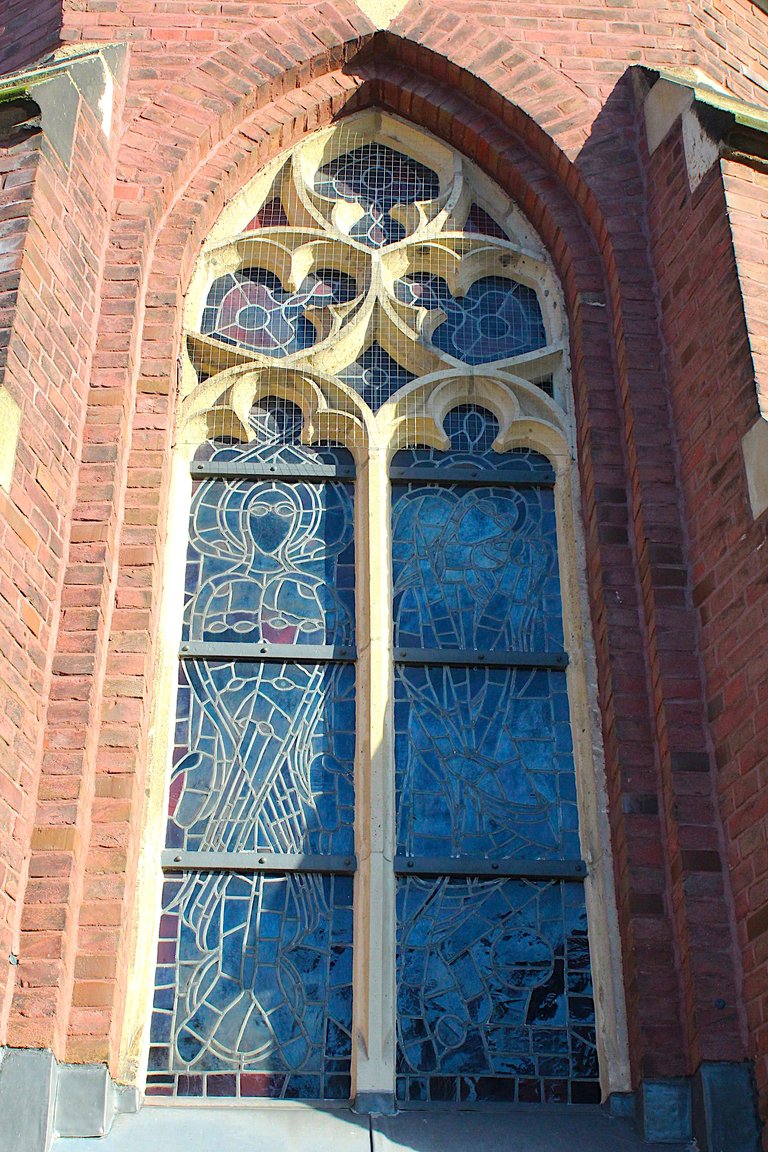
| The church was built from 1873 to 1875. Coincidentally this is the church of my confirmation. | Die Kirche wurde von 1873 bis 1875 gebaut. Zufälligerweise ist das auch die Kirche, in der ich gefirmt wurde. |
|---|
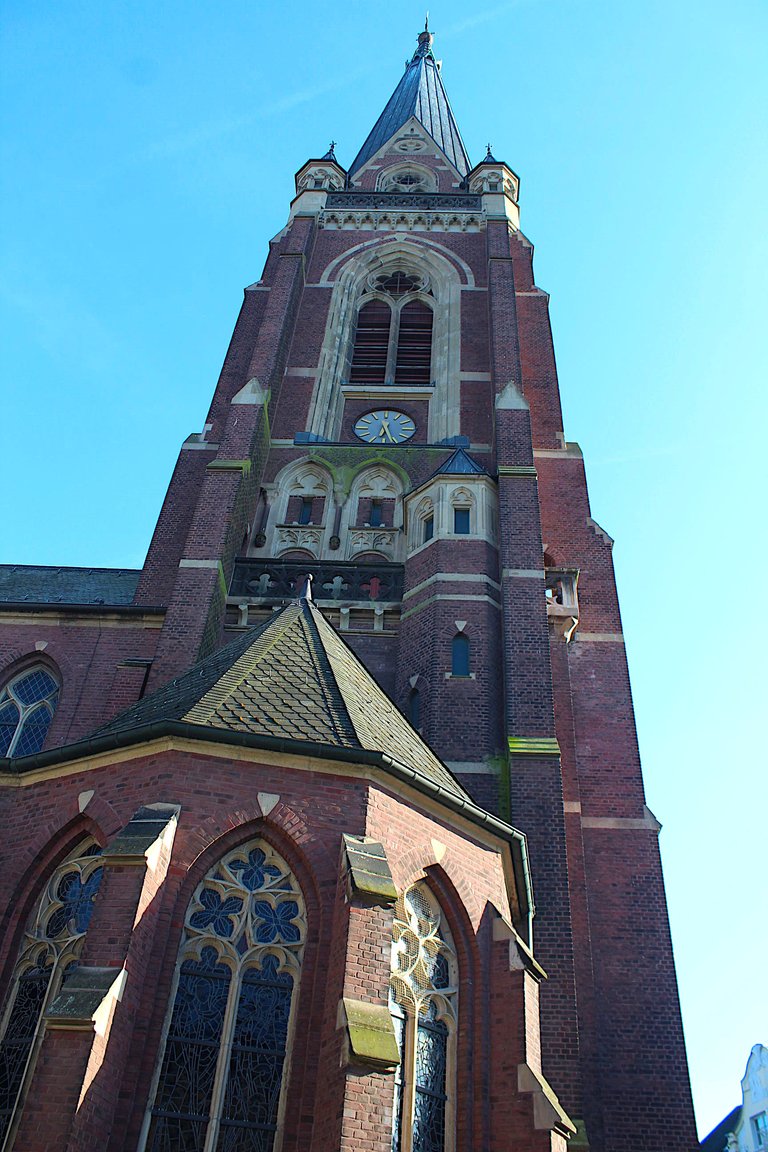 | 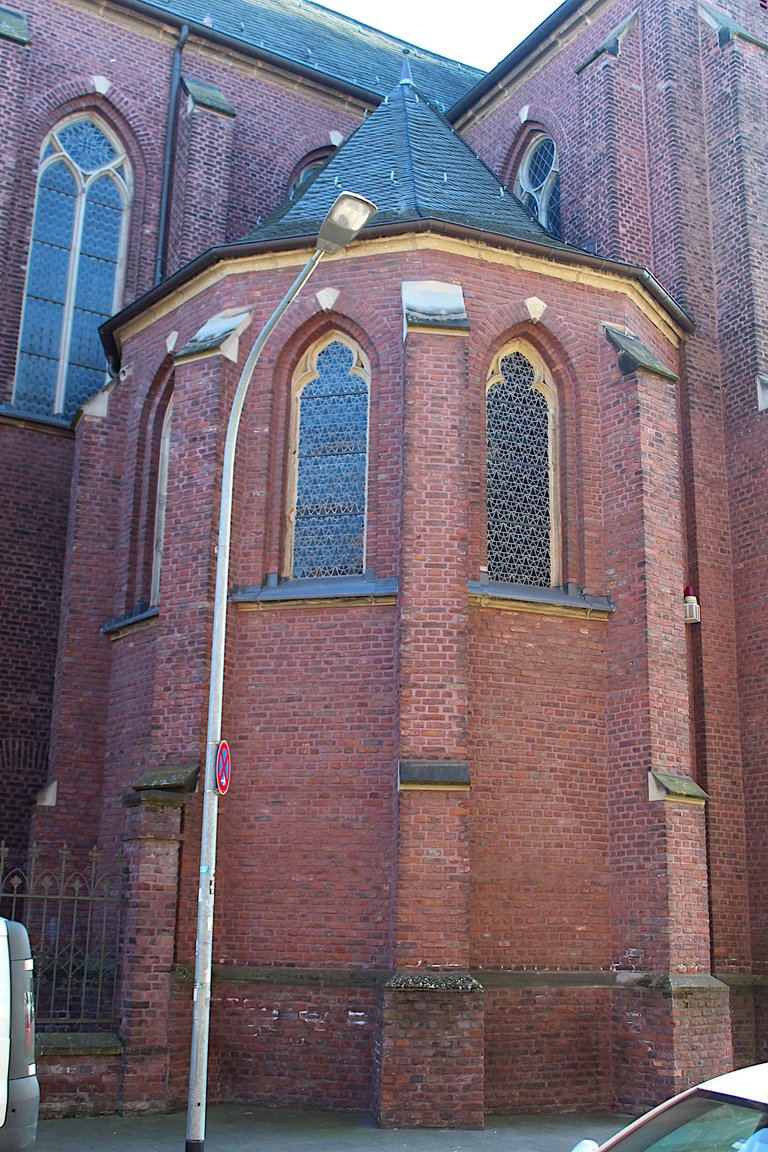 |
|---|
| Last not least, another neo Gothic church. This is actually not a church anymore. It has been deconsecrated & turned into an apartment building. | Zum Schluss dann noch eine neogotische Kirche. Die keine Kirche mehr ist. Sie wurde säkularisiert & zu einem Wohnhaus umgebaut. |
|---|

| Goes to show that a heavily catholic area has lost a lot of its religiosity. Every few hundred meters, there is a 'church', but they are not frequented very much anymore. | Zeigt den Verlust an Religiosität in einem einst stark katholischen Gebiet. Alle paar hundert Meter gibt es eine 'Kirche', nur geht kaum noch jemand hin. |
|---|
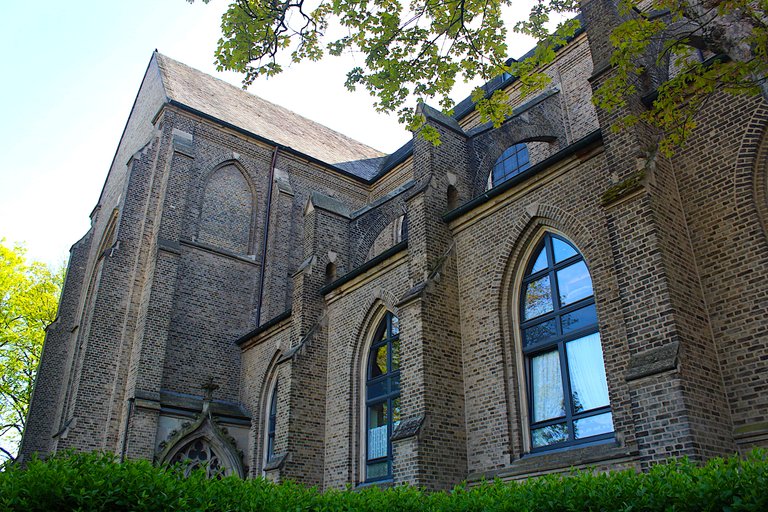
| So much for my hometown, I guess. There is other stuff, like an ancient Roman settlement, but I don't have any pictures. So, unless I visit my hometown again for a longer trip, there probably won't be much to write about it. It's a nice town to live in, but for tourists, there is not that much to see. But now, just a few more pics: | Das soll's dann wohl für meine Heimatstadt gewesen sein. Es gibt noch anderes, z.B. eine altrömische Siedlung, aber ich habe davon keine Bilder. Sollte ich also MG nicht nochmal für eine längere Zeit besuchen, gibt es kaum etwas für mich darüber zu schreiben. Es ist ein angenehmes Städtchen, um dort zu leben, aber für Touristen gibt es nicht viel zu sehen. Jetzt jedoch noch ein paar Bilder: |
|---|

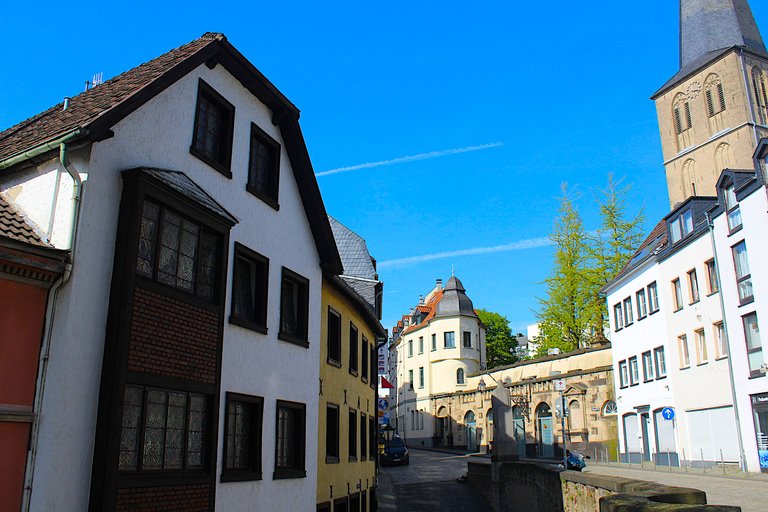

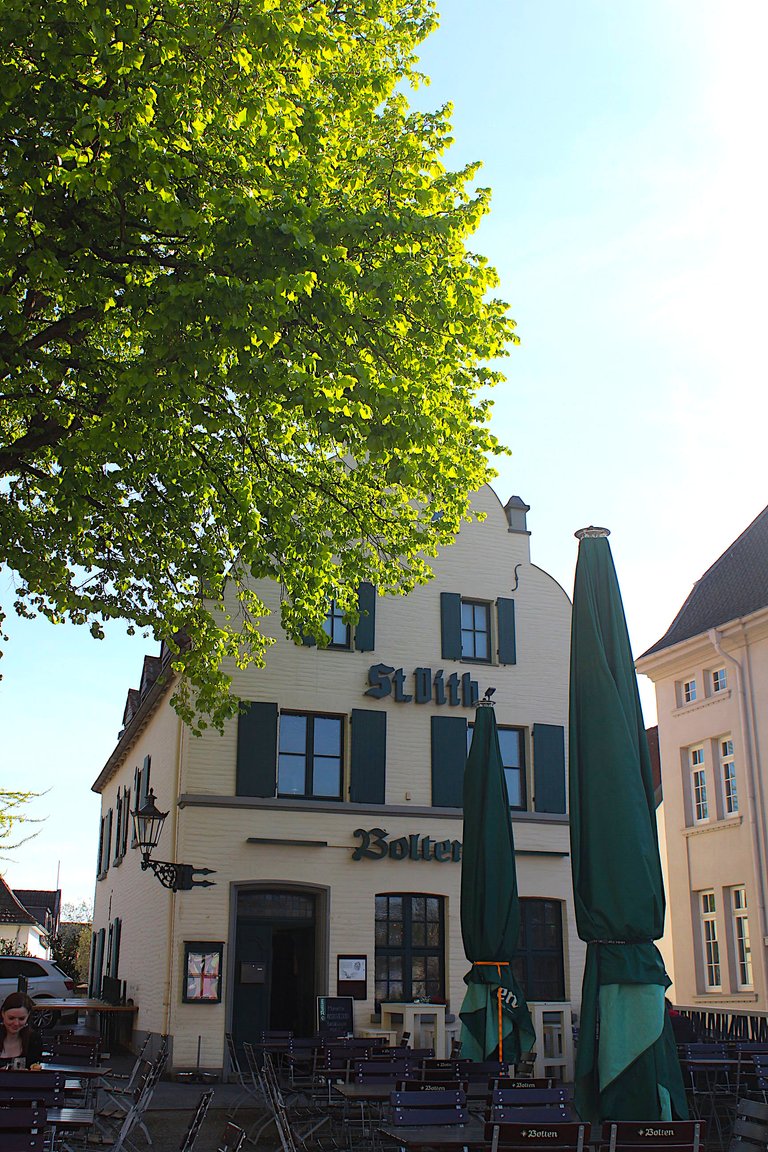
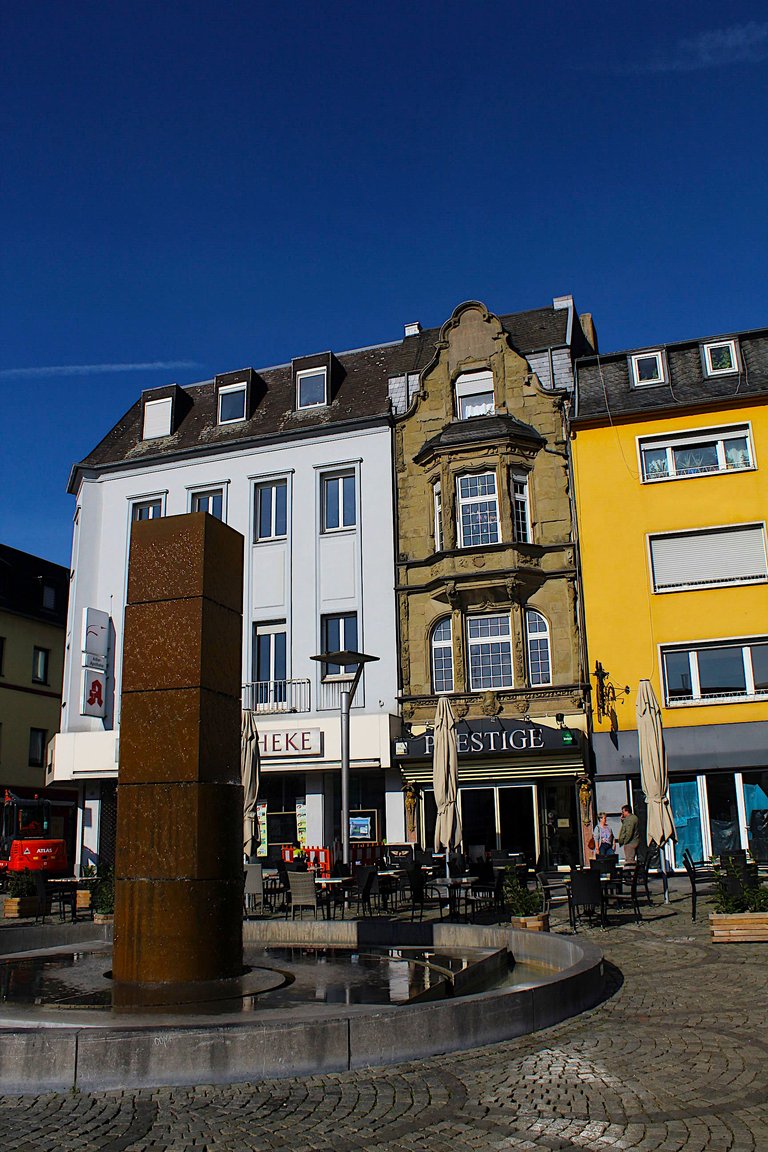
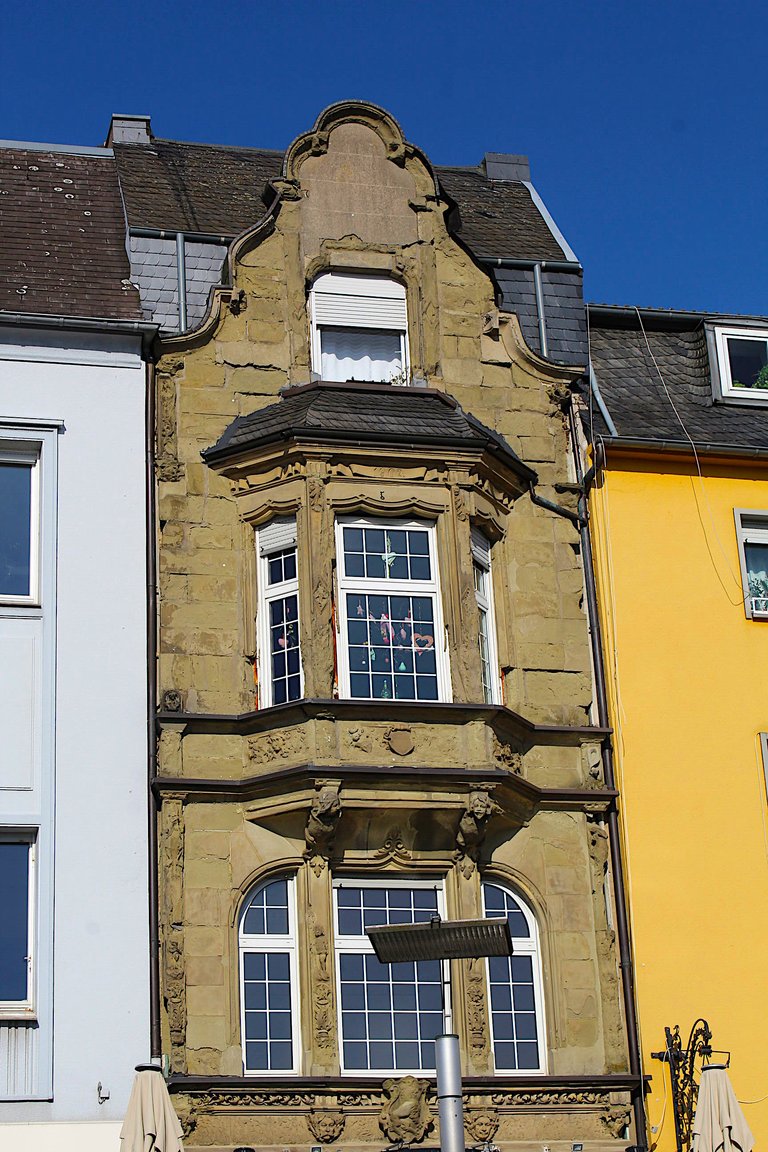
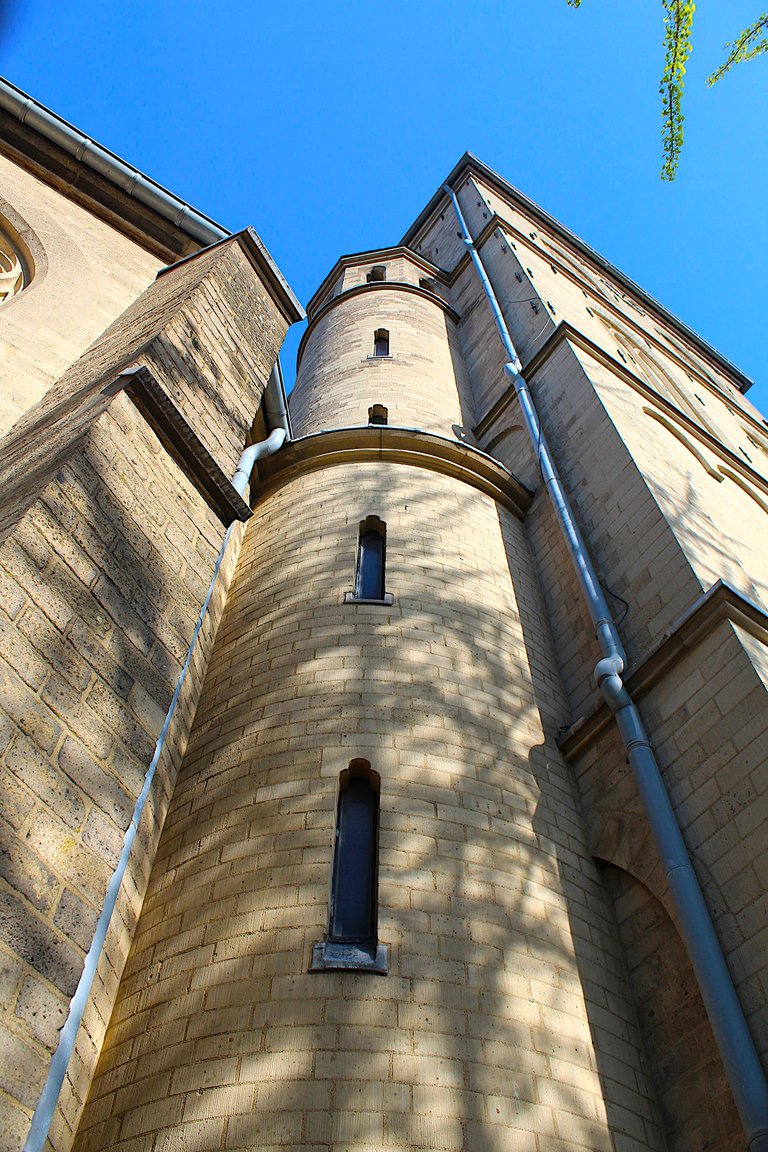
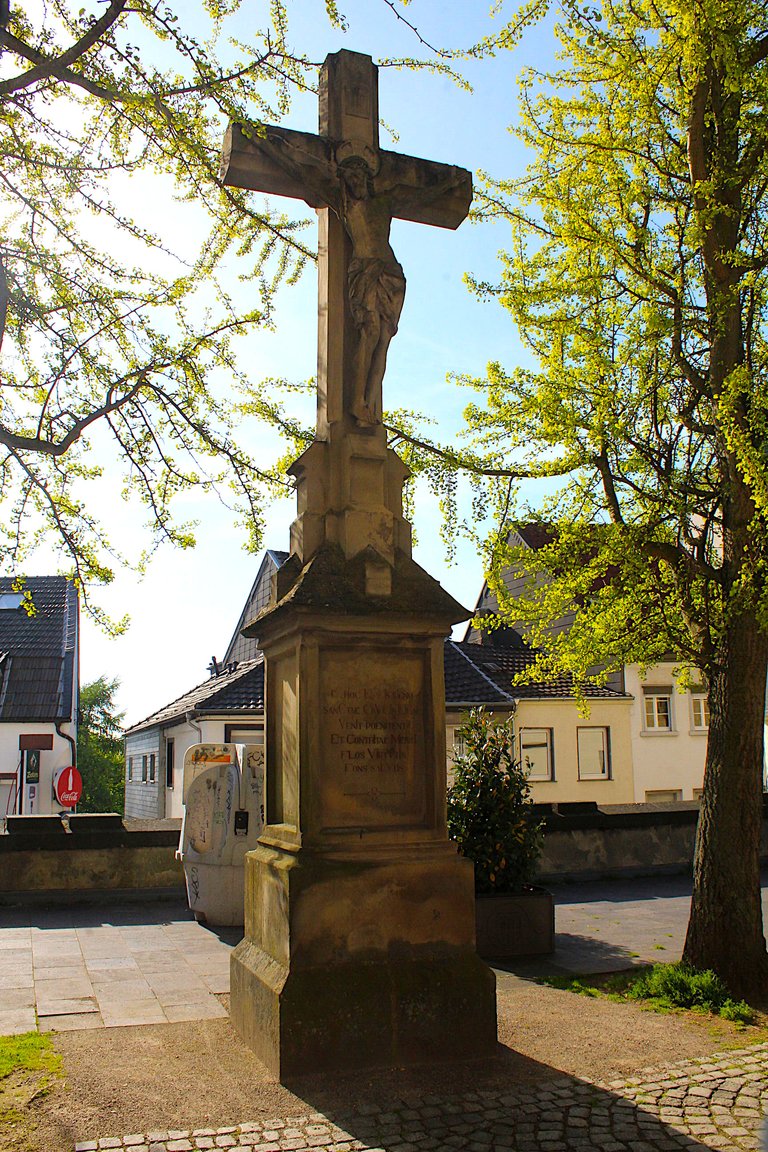




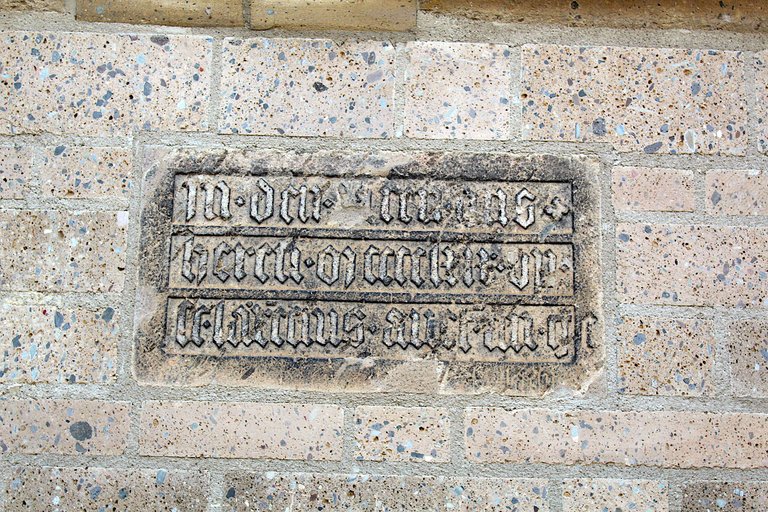
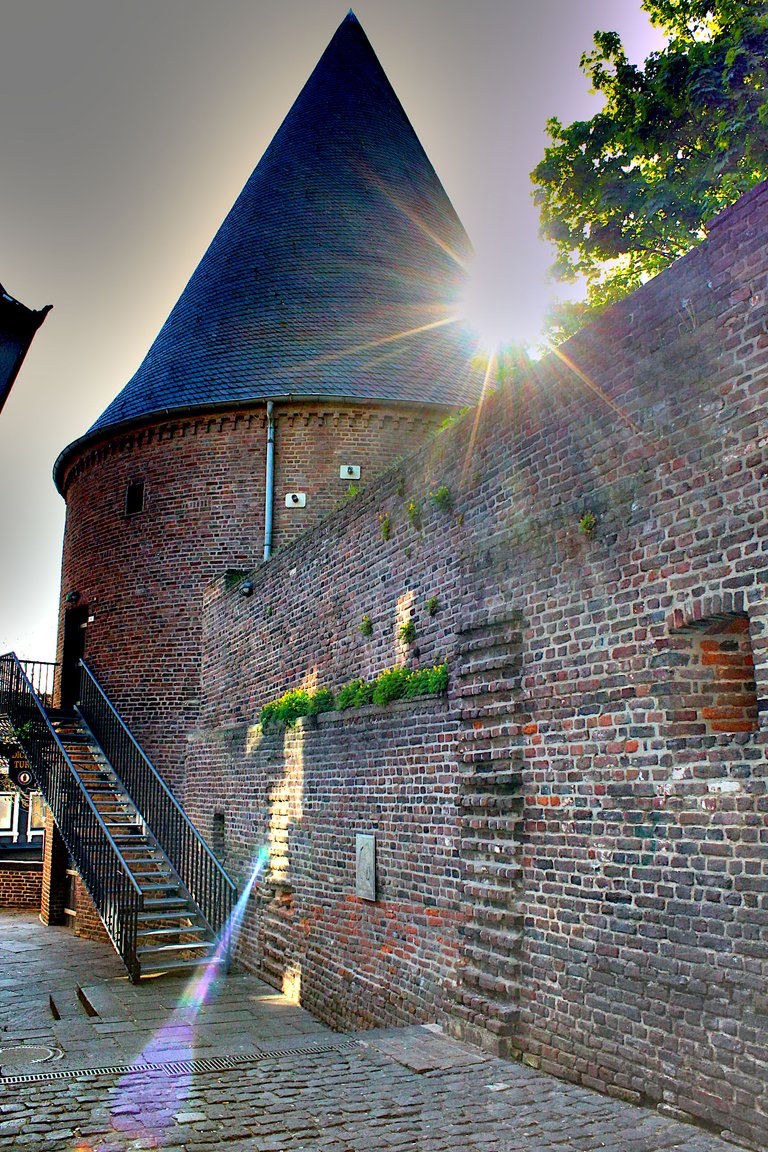
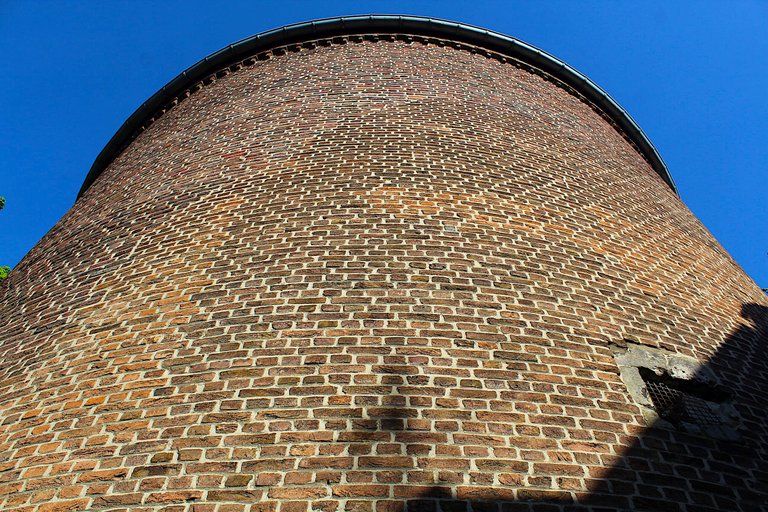
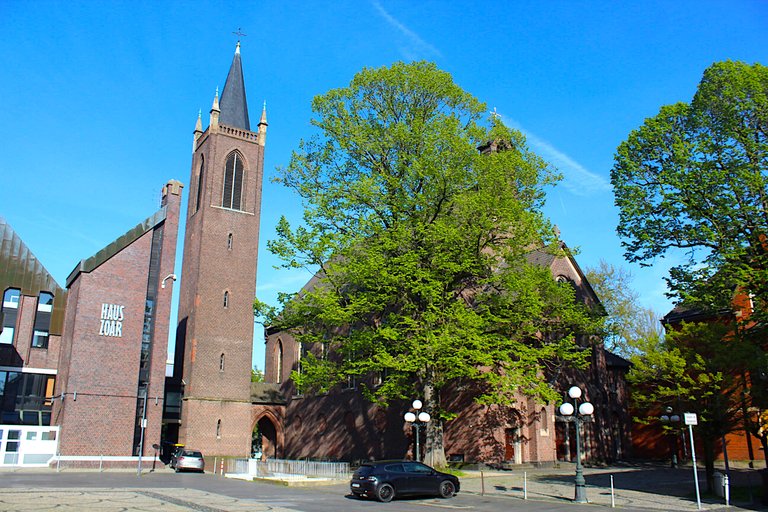



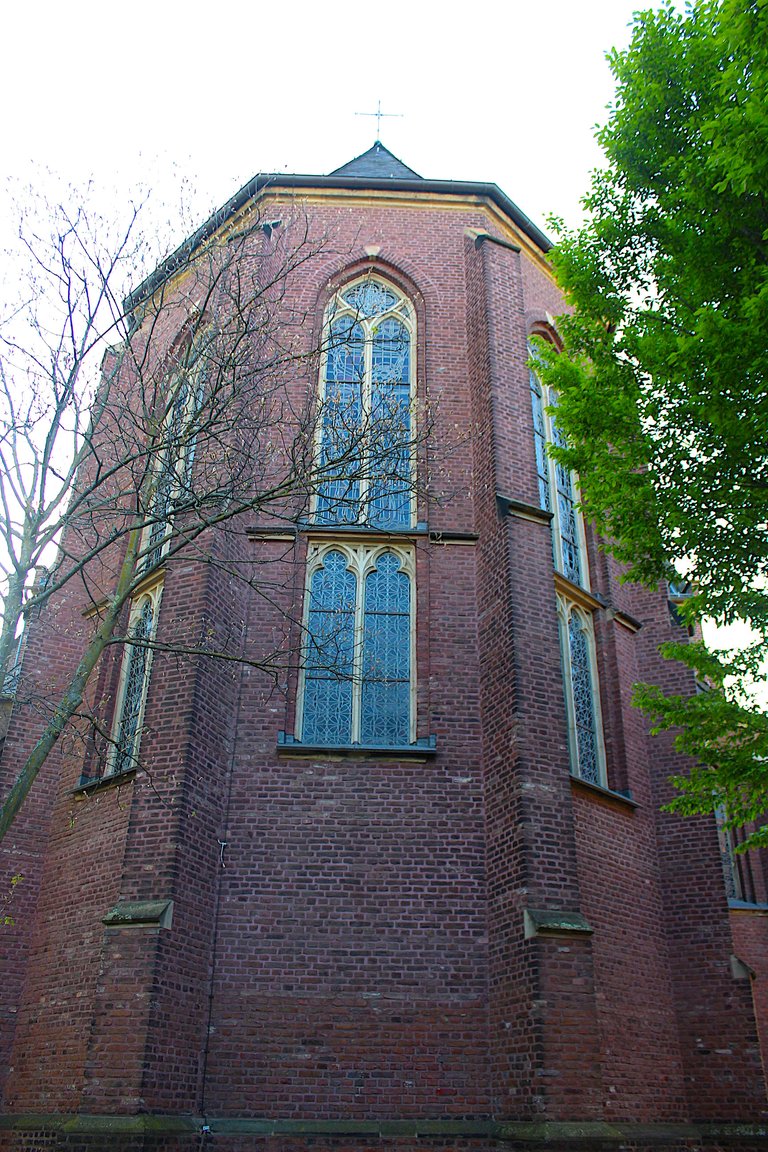
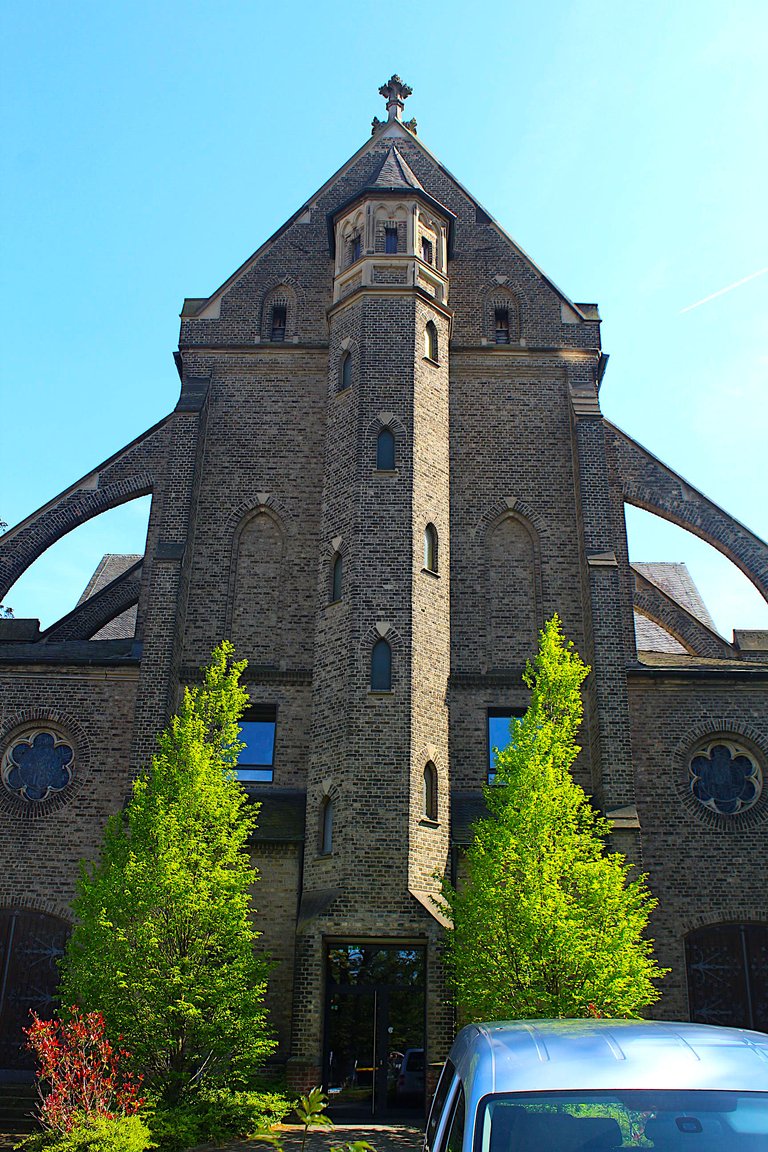

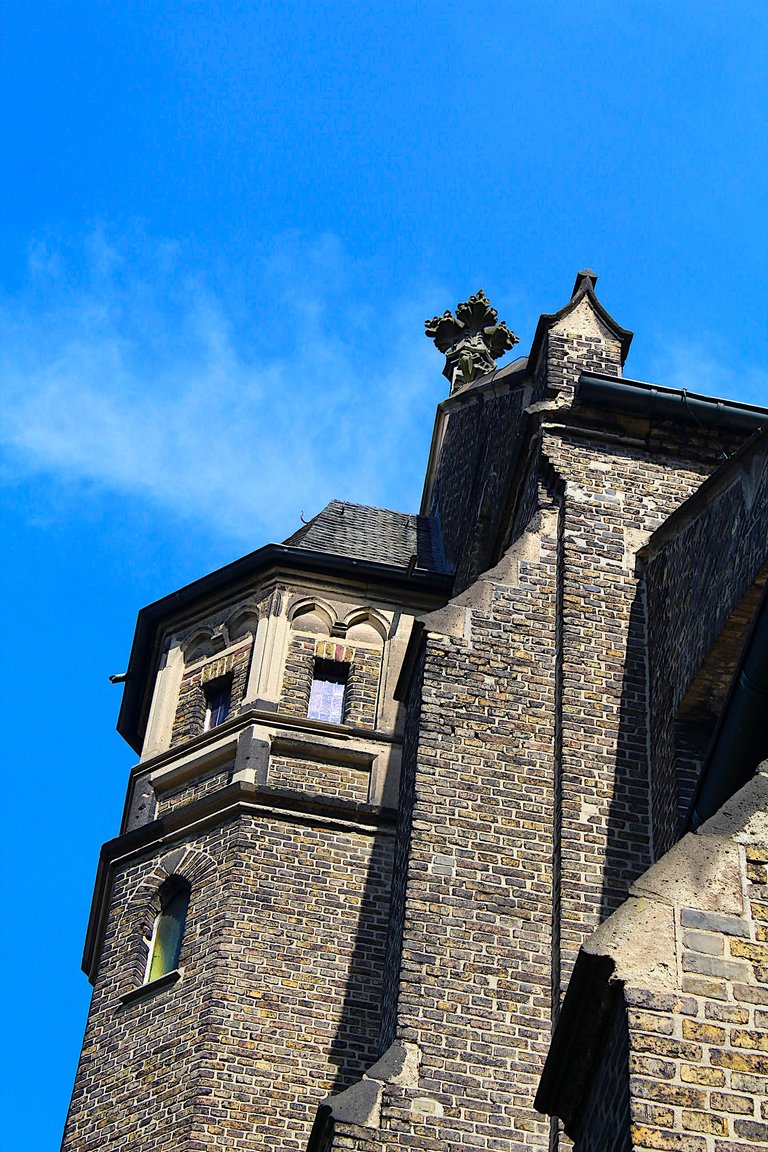

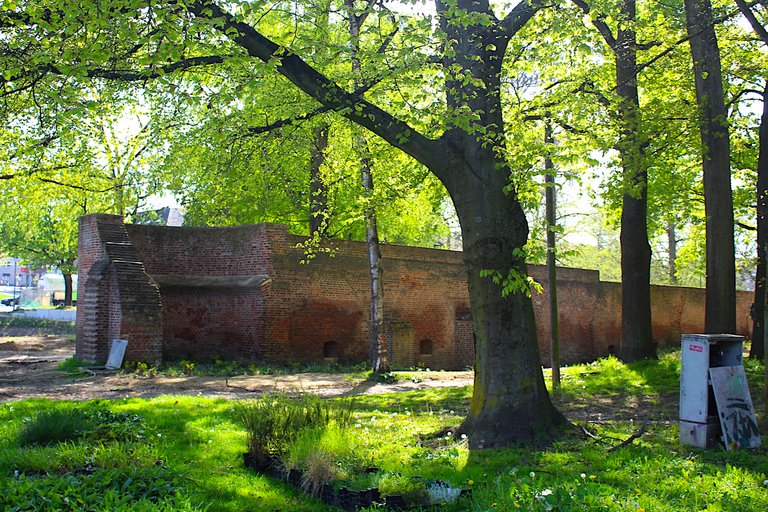
0
0
0.000
Congratulations, your post has been added to Pinmapple! 🎉🥳🍍
Did you know you have your own profile map?
And every post has their own map too!
Want to have your post on the map too?
Thank you!
Hiya, @ybanezkim26 here, just swinging by to let you know that this post made it into our Honorable Mentions in Travel Digest #2195.
Your post has been manually curated by the @pinmapple team. If you like what we're doing, please drop by to check out all the rest of today's great posts and consider supporting other authors like yourself and us so we can keep the project going!
Become part of our travel community:
Ready for an adventure? Book your next hotel stay with Cryptotraveldeals and pay with cryptocurrency! #Cryptotraveldeals #CryptoTravel #AdventureAwaits
https://cryptotraveldeals.com/HotelSearch?ref=Y2hyaXNhaWtpLCAyODQ%253D